Archetypal Movements and Flowing Forms
(1.1) Water reacts to its environment in the most interesting way. As Bruce Lee once said “if you put water in a cup, becomes the cup”. Without studying water, or more accurately, without playing with water, then its archetypal movements, and forms stay hidden. A drop of ink into a vortex or lycopodium powder dusted onto a tray of water can reveal the archetypal movements of water, and create a sense of wonder.
Water seeks to be in flow. Water that is trapped, and standing appears lifeless, lightless, and doesn’t take the form of an organism. Water wants to move, change direction, and meet itself. In streams, rivers, and bodies of water, water is able to flow.
Water doesn’t take the shortest path between two point, water seeks to meander like the body of a snake and pulse like a heart beat. Flow forms are designed to allow water to flow in a way congruent to nature. A flow form may be seen as fulfilling the function of an organ, allowing the water to metamorphize or blossom.
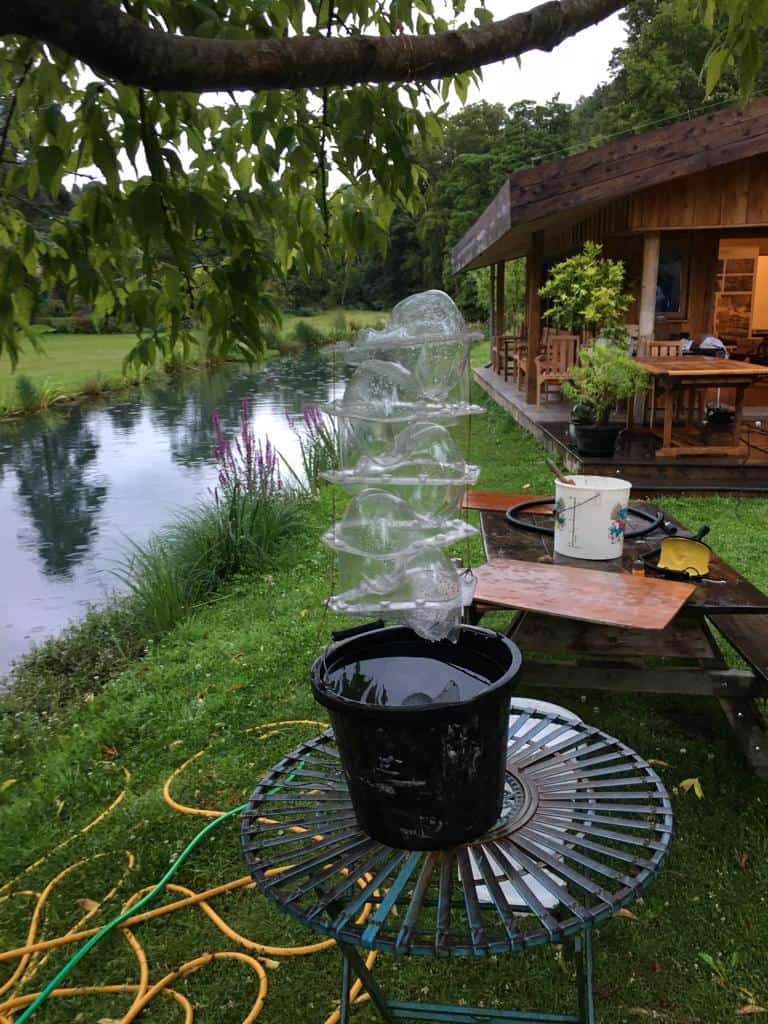
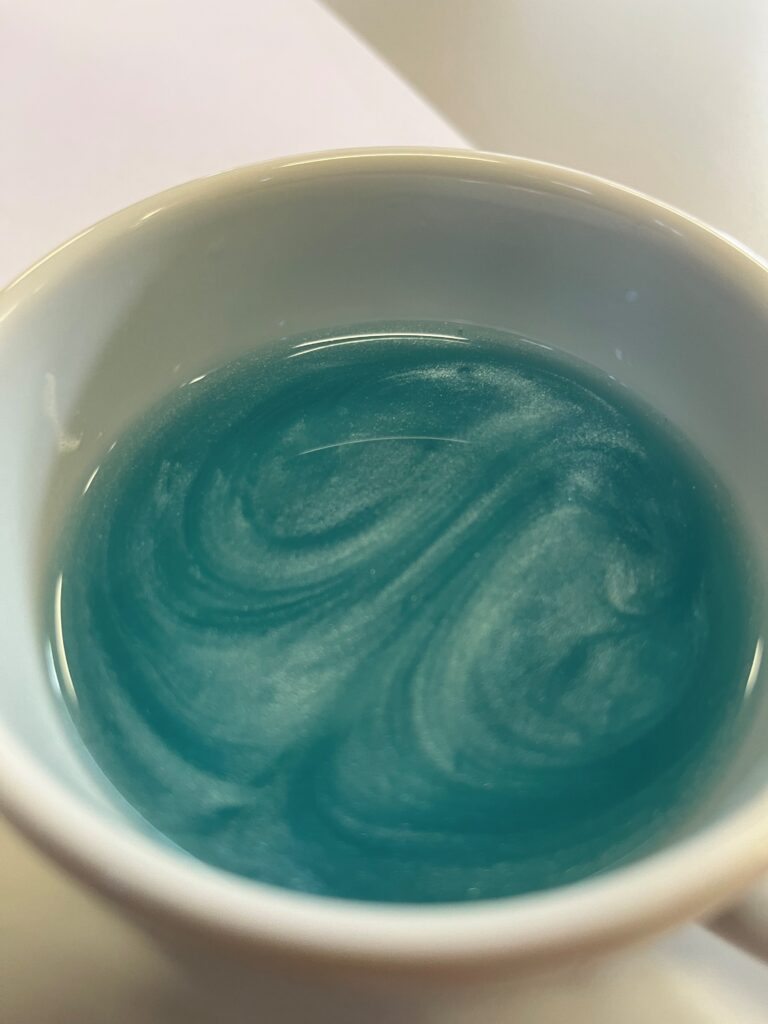
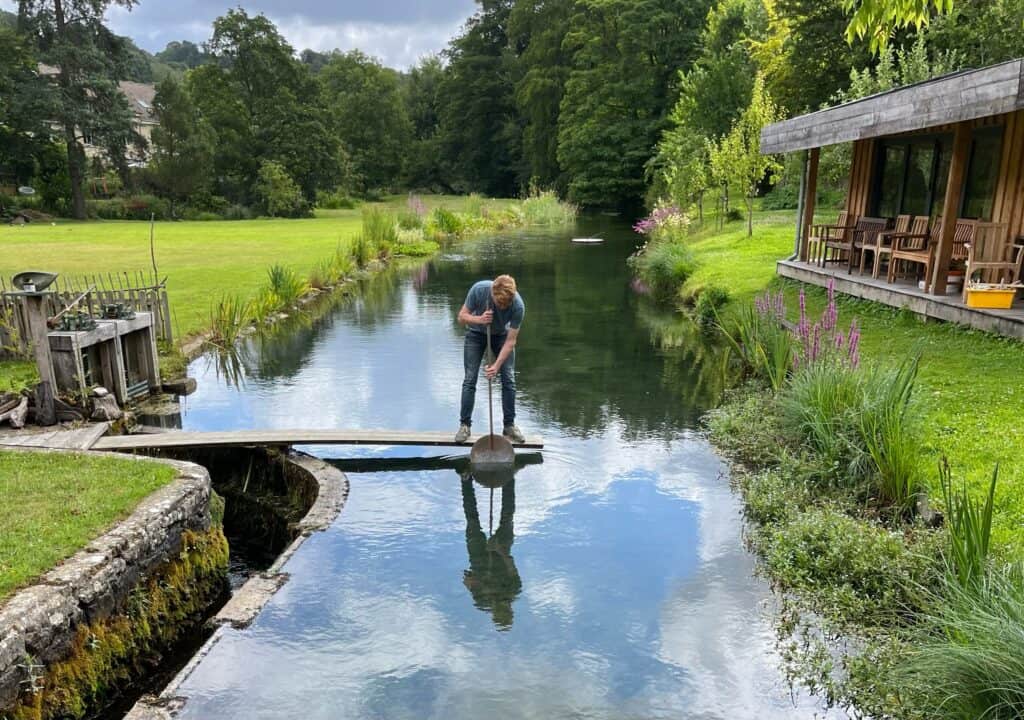
| Conditions Is The Waters Environment | Response/Gesture | Character Of Movement |
| Pulling | Any Vortex | Contraction |
| Pushing | Ring Vortex | Expansive |
| Pushing & Pulling | Twin Eddie, Vortex Streets | Rhythmic |
Simon kindly put together a workshop, where Liesl Haasbroek (from the South Africa BDA & International Flow form Association), Simon Charter (Ebb & Flow), and I shaped some clay to create a flow form. It was a very intuitive experience, and required ‘disciplined play’.
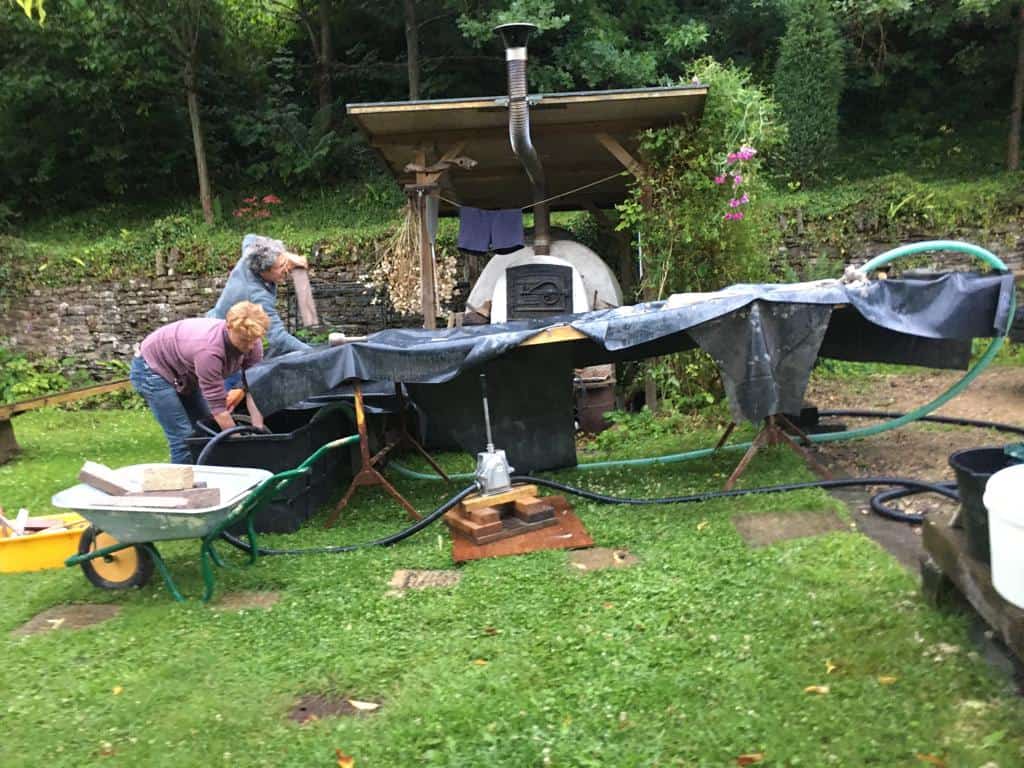
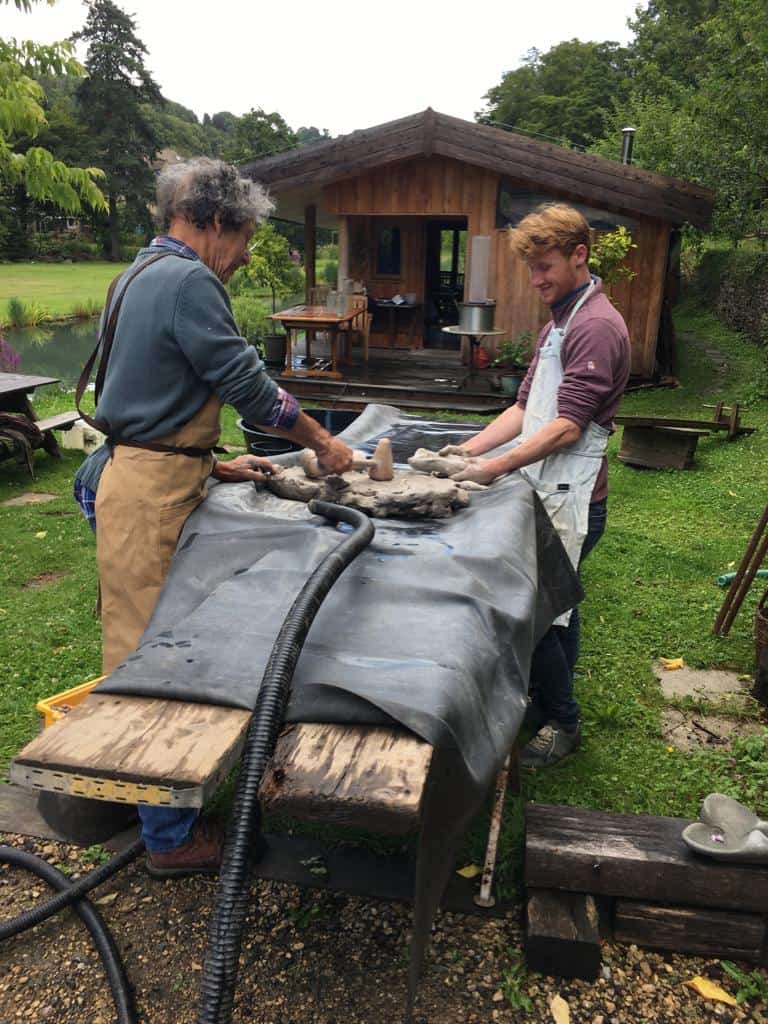
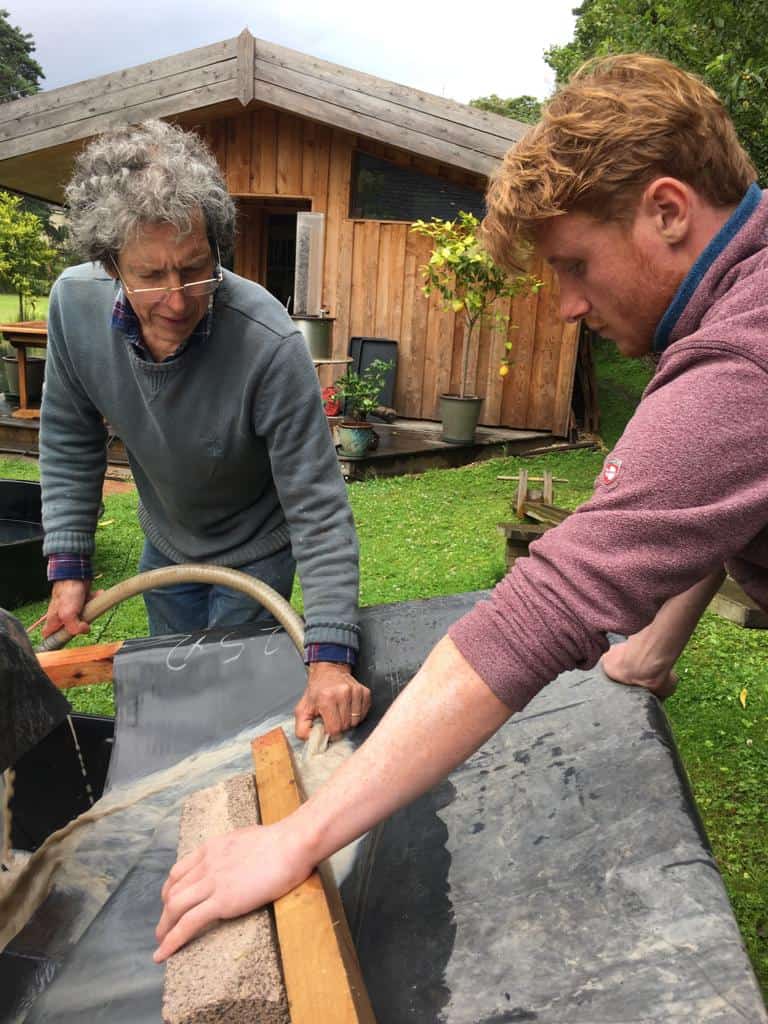
Flowing Forms in Nature
(1.2) Flowing forms can be seen throughout nature, furthermore, flowing forms may be the formative forces behind all natural phenomena. If you hold a duck egg to a light. you can see that it is formed by spirals or vortex’s from the tip to the base. This pattern is formed, because the egg turns when it is being formed. Another example of flowing forms in nature can be seen in seashells. Below is a picture of a strombus cut in half. As the organism grew, it started with the initial shell, each time moving outwards, to form a thicker shell. Each layer, is continuing the metamorphosis.
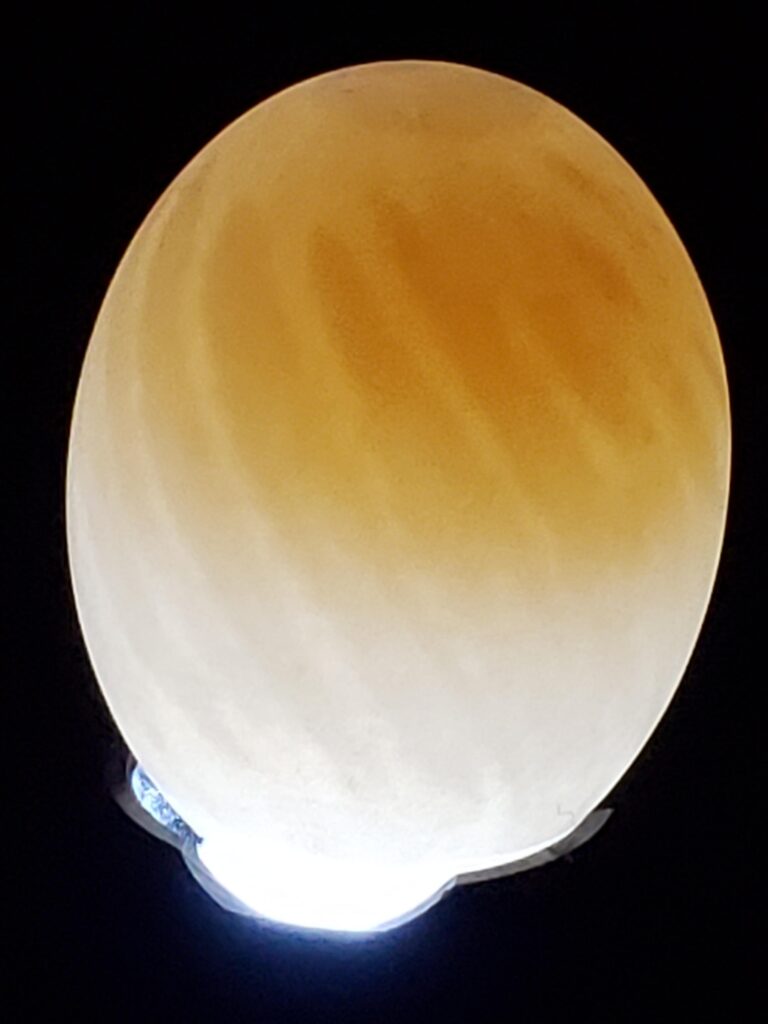
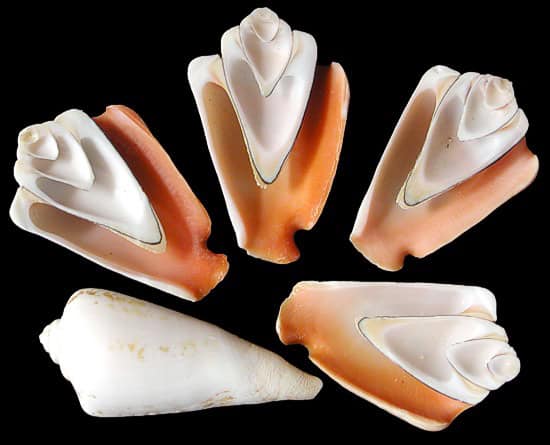
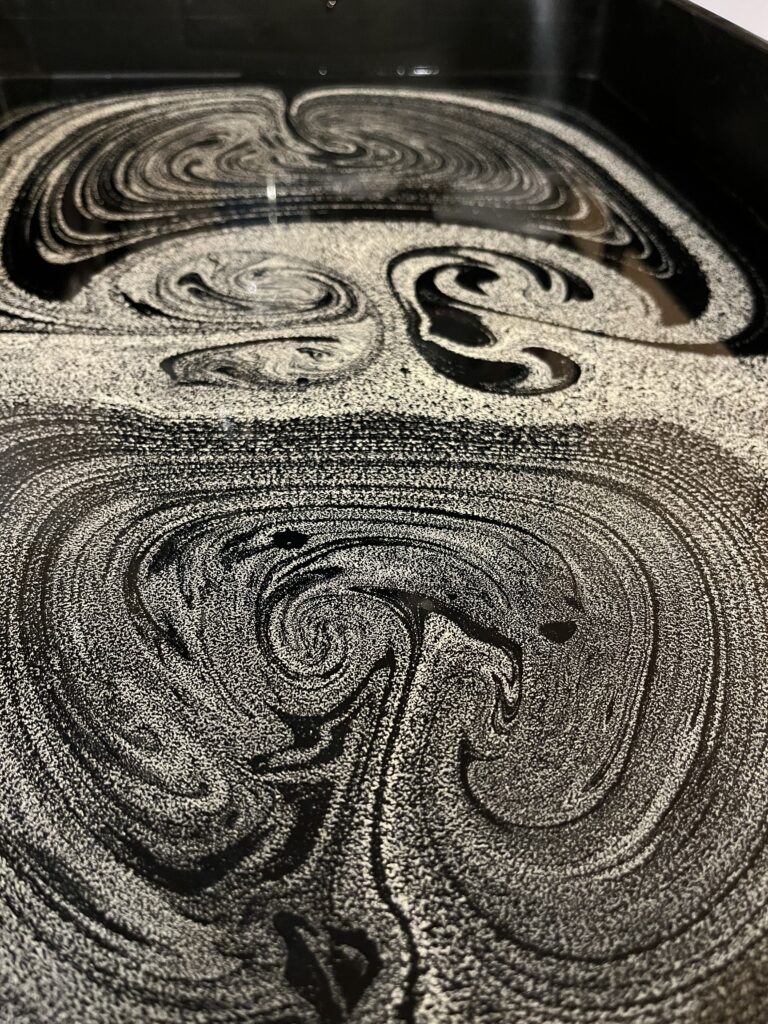
Flowing forms can be see in the metamorphosis of a plants, most visually when looking at the development of the leaves. You can read about the metamorphosis of plants here. I believe that we can see these flowing forms everywhere I nature, although many examples are imperceptible. The picture above to the right, shows water with very fine fungi spores, which can site on the top of the surface. We moved the water with a spoon. The first stoke shows a plant like form, as the water turns in on itself a various stages reminiscent of leaves, before taking a flowerlike form at the end. In the picture, we took turns moving the water in different directions to create a beautiful form.
The Vortex and Biodynamic Preparations
(1.3) I have stirred many field preparations over the last three years. A vortex is formed when stirring the preparations. It generates a pushing and pulling motion, that is able to create a space in the vortex for the cosmos to enter into the field preparation.
“You have to start stirring it quickly around the edge of the bucket, on the periphery, until a crater forms that reaches nearly to the bottom, so that everything is rotating rapidly. Then you reverse direction quickly, so that everything seethes and starts to swirl in the opposite direction. If you continue doing this for an hour, you will get it thoroughly mixed.” Rudolf Steiner
A biodynamic stirring takes the water on a journey to order, before chaos, then back to order. This creates billions of micro-bubbles that interact with each other, reaching incredible temperature at the micro level. The interactions of the micro-bubbles in the chaos, is full of potential, and energizes and oxygenizes the water.
In the videos below, you can see how the vortex creates a pulse, and moves like a living organism. Water is brought from the outside, before moving down the vortex, and back around.
Recent Posts
Biodynamic Ecology and the Brain: How the Farm Organism Aids Neurodivergent Self-Regulation
The Farm as a Living Organism The Farm Organism is a fundamental concept within the biodynamic agricultural method, which began in 1924 with a series of eight lectures on agriculture by...
In February 2024, I attended the 100th biodynamic conference at the Goetheanum in Dornach, Switzerland. Here, biodynamic farmers, educators, winemakers, community leaders, and growers met to share...
